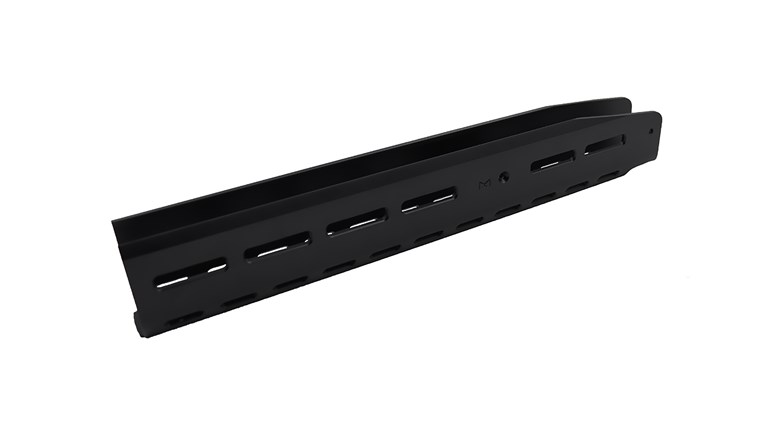Few hunting rifles can knock the dust off nostalgia with the same force they hammer a deer. A lever-action .45-70 is one of them. The .45-70 Gov't. cartridge has been around since 1873 and served a stint as the service cartridge for the United States military. I guess old soldiers never die because it's still with us and maybe more popular then ever. This is partly due to nostalgia but more so to the cartridge being suitable for everything from whitetail deer to Cape buffalo. Henry "gets it" and recently added a .45-70 to its stable of American-made lever guns.
The .45-70 owes its utility to ammo that comes in various power levels. Low-power loads like Remington's 405-grain JSP operate at less than 21,000 psi. Remington 300-grain SJHP and Federal 300-grain Fusion loads operate closer to the higher industry-standard pressure of 28,000 psi. Loads from companies like Buffalo Bore and Garrett generate higher pressures still. To enjoy the maximum versatility of the .45-70, your rifle should handle loads across the entire spectrum. According to Henry, its new rifle does just that.
At first glance, the Henry Model H010 .45-70 lever-action resembles a Marlin Model 336 or 1895, but closer inspection reveals a distinct difference: The Henry is missing the loading gate on the right side of its blued steel receiver. Henry designed its .45-70 to load from the front of the magazine tube. Company technician Kevin Maguire explains, "We keep [the magazines in] all our firearms front-loading to hearken back to the time of the original Henry. This design also allows for safer unloading of the firearm." Nostalgic? Yes, but practical, too.
Some might consider this undesirable because one virtue of lever guns that load through a side gate is you can reload the magazine and shoot almost simultaneously. With a tube-loading lever gun you have to virtually disable the rifle to load the magazine. Of course there is an option. If you run the Henry empty, you can push a cartridge through the ejection port, close the action and shoot. For everything but dangerous-game hunting and predator protection, the inability to load while you shoot should not be an issue. The Henry holds four cartridges in the magazine and another in the chamber. Note the lever must be held closed while inserting the plunger in a full magazine tube.
True lever-gun aficionados will appreciate the absence of a cross-bolt or tang safety, but they will probably scoff at the hammer's lack of a half-cock position. What the rifle does have is a transfer-bar safety. This means the trigger must be pulled and held to the rear for the rifle to fire. To lower the hammer with a cartridge in the chamber, hold the hammer with your thumb, depress the trigger and, as you ease the hammer forward, release pressure on the trigger. Since the face of the hammer has a recess for the firing pin, you can safely carry the rifle loaded with the hammer down.
Aside from these departures from conventional modern lever-action rifle design, the Henry is what you'd expect of a classic American lever gun. The buttstock and fore-end are American walnut with tasteful checkering, and the rifle has a thick, ventilated, rubber recoil pad. The steel is matte blued, and overall fit and finish are good to excellent. Kudos to Henry for putting a smooth-operating lever and a darn good trigger on this lever gun; it has minimal take-up and breaks like a dried twig at a surprisingly light 4 pounds.
Though the rifle is drilled and tapped for scope bases, my favorite feature is the iron sights from XS Sight Systems. (I own several lever guns, and all wear XS sights.) The rear sight is a large ghost-ring aperture with a .220-inch opening that is fully adjustable for windage and elevation. The front sight is a black square post, half as wide as the opening in the rear aperture, with a white stripe down its center. Besides being very fast to acquire, the setup provided all the precision necessary for accurate shooting. And accurate the rifle was! I had no problem putting three shots into 1-inch groups at 50 yards from a sandbag rest with any load I tried. From the standing, offhand position I could hit a snuff can almost every time at that distance, too.
Whether you have a sentimental thread in your body, Henry has, in a way, remodeled the old farmhouse. Those looking for a versatile, American-made, big-game rifle that's fast-handling, easy to carry, powerful and accurate ought to consider the nostalgic approach with the Henry in .45-70.
Technical Specifications:
Type: lever-action repeating centerfire rifle
Caliber: .45-70 Gov't.
Barrel: 18.43"; 1:20" RH twist
Magazine: front-loading tube; 4-rnd. capacity
Trigger: 4-lb. pull weight
Sights: XS Sight Systems fully adjustable ghost-ring rear and white-stripe ramp front; drilled and tapped for mounting optics
Safety: transfer bar
Stock: checkered American walnut with pistol grip; LOP 14 1/8"
Metal Finish: matte blue
Overall Length: 39"
Weight: 7.08 lbs.
MSRP: $850







































